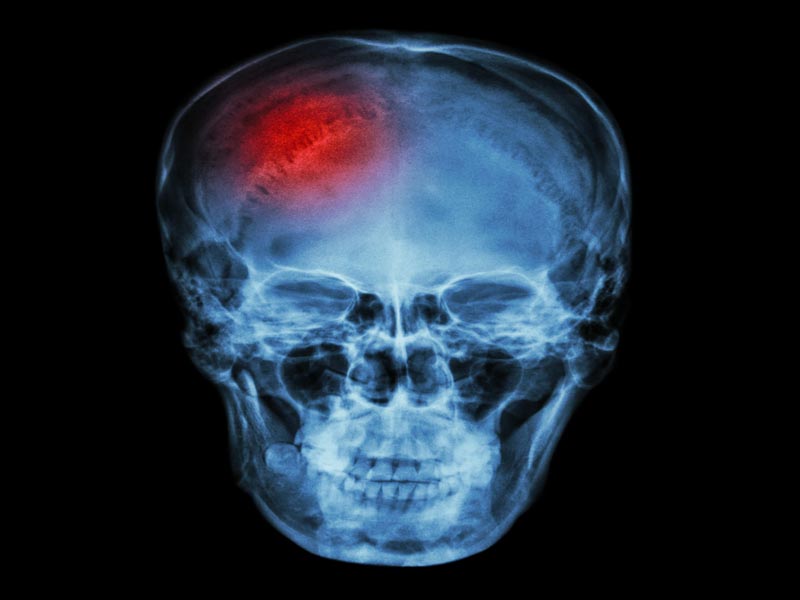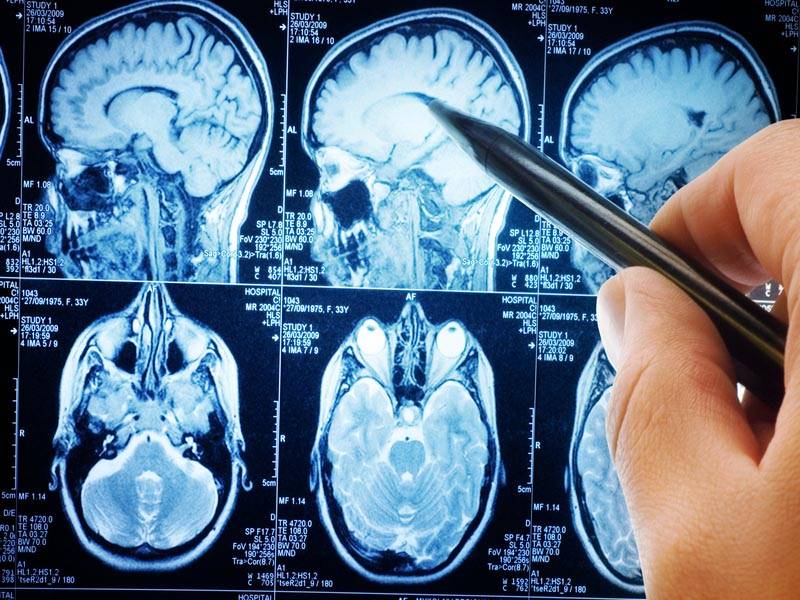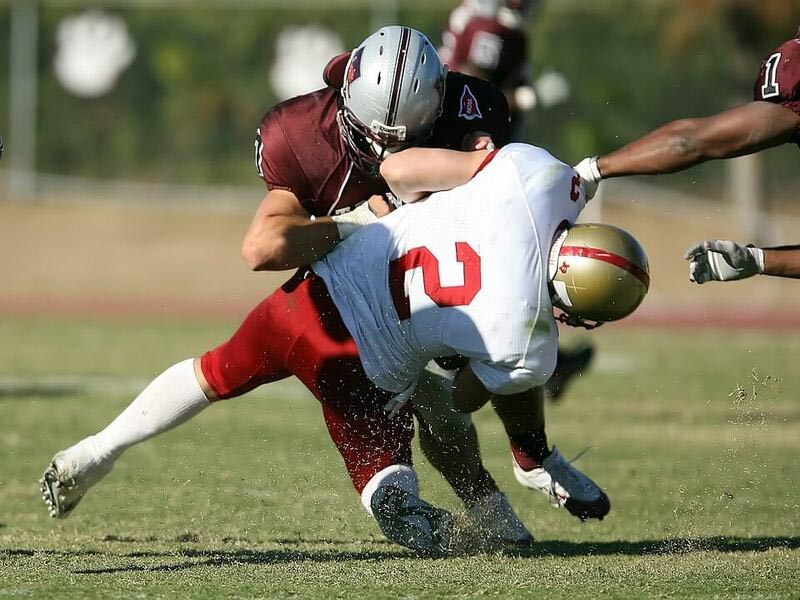Quick – what do Dan Marino, Les Williams[i] and Jim McMahon have in common – aside from being former professional football players?
Each suffered concussions that led to suspected or confirmed traumatic brain injury (TBI). The tie between football and brain injury is beginning to emerge, and it is not a pretty picture for these athletes and thousands of others like them.
Concussions and Football
Professional football is a full-contact sport; with massive players deliberately slamming into one another, it is easy to see why so many become injured. Despite helmet use, these regular collisions lead to damage to the brain. The greatest area of concern for football players is from repeated concussions; impact to the brain can lead to Chronic Traumatic Encephalopathy (CTE). CTE is believed to be caused by these ongoing hits to the head in the course of a normal game. Dozens of professional players have been diagnosed with CTE in the past decade[ii], and the effects are long-lasting and devastating.
CTE went undetected for years; athletes were diagnosed posthumously, after suspicion of CTE. Currently, the only way to confirm CTE is through a post-mortem exam[iii], but the presence of symptoms could indicate the condition is present, and players are seeking out treatment. 99% of the brains donated to science by professional football players[iv] were found to have CTE, indicating this was a much wider-spread issue than originally believed. Tragically, CTE was also detected in the brains of players who made headlines after taking their own lives, according to CNN[v]. Last month, NFL player and convicted killer Aaron Hernandez was found to have CTE[vi]; an autopsy revealed the condition after his suicide earlier this year.
How Common are Concussions in Football?
Concussions in football are not only common, but they are also expected; every time the head receives an impact, the brain can bounce around inside the skull. This ‘bouncing” happens whenever an impact occurs, whether a helmet is worn or not. Upon impact, the brain tissue can be damaged[vii], resulting in a lack of consciousness, increased tiredness, “seeing stars” and ongoing confusion.
These problems occur in the aftermath of a concussion but can continue for months to years afterward. Repeated concussions can ultimately lead to CTE and the resulting problems with focus, concentration and cognitive skills. Left untreated, even a single concussion can have lasting negative impacts on the way the brain performs and the overall quality of life experienced by the player.
No Age Limits on CTE
While NFL athletes may be the ones making headlines, football-related brain injury is not restricted to those who play the game professionally. Kids and teens not only can they sustain brain injuries from football-related head trauma, but they make up the majority of patients seen for sports-related concussions, according to the CDC[viii]. Other sports where head injuries can occur include soccer, basketball, gymnastics, lacrosse and more.
Children and teens that play football are at risk of CTE during both practice and games[ix] and are diagnosed with the condition in alarming numbers. According to the American Academy of Pediatrics[x], visits to the emergency room that are caused by concussions have doubled in the last 10 years among kids between 8 and 13[xi]. Teens faired even worse, with a 200% increase in concussion rates during the same time period.
These alarming statistics may not tell the whole story; about 33% of concussions are not diagnosed, according to researchers from the University of Pittsburgh[xii]. In many cases, if the player does not lose consciousness, he never heads to the emergency room. A 2018 publication for coaches, parents, and athletes targeted this problem and aimed to boost awareness of the danger of head injury and brain damage for youth football players. According to this CDC publication[xiii], head injuries without visible lumps, bleeding or sustained consciousness must be taken seriously; they could lead to problems later in life.
What Can Be Done About CTE in Football Players?
Campaigns led by groups including the CDC and the American Academy of Pediatrics are designed to prevent concussion and boost awareness of the issue, but what about those who are already injured and experiencing the issues related with CTE?
Neurofeedback evaluates existing brainwaves and retrains the brain to function in a healthier way, often eliminating unwanted symptoms and issues. While concussion and CTE damage were once seen as something that could not be reversed, there is new hope for both professional and student-athletes in any sport.
Hope for Concussion and CTE Patients
According to USA Today, professional football players are turning to neurofeedback to get relief. Greenbay Packers player Jermichael Finley began to see results from neurofeedback after only a few weeks.
“I didn’t think it was something that could be fixed,” Finley said, speaking with USA Today.
“I noticed irritability began to set in and really didn’t know what to do. When I heard about the place, my first thought was, ‘Man, this is not my kind of deal.’ I was told to think outside the box and see what’s going on with my brain.”
Finley saw improvement – and his brain scan did too. When he was initially scanned, Finley had 44% dysfunction. Just six weeks later, the retired player had only 20% dysfunction[xiv].
While results vary, neurofeedback provided both reliefs from symptoms for this retired pro and a significant reduction in the dysfunction he was experiencing.
Neurofeedback and Concussions
While many athletes turn to MyBrainDR and neurofeedback to optimize performance, neurofeedback therapy has shown promise in treating concussions and CTE as well. Since CTE and concussions impact brain function and the actual physical and chemical makeup of the brain, the (qEEG), or brain scan, used in neurofeedback can help quantify the damage and reveal where dysfunction is occurring. Administered by a professionally trained technician, a brain scan is a quick and easy process, during which the patient wears a snug-fitting cap and relaxes in comfort while brain waves are measured by sensors in the cap.
For those who suspect a concussion or who have been injured while playing football or any other sport, neurofeedback offers a pain-free, worry-free way to identify and target troublesome brainwave patterns. Once the initial brain scan is analyzed, and areas of concern are noted, MyBrainDR creates a protocol that is custom designed to address the changes the player is experiencing and to improve the issues identified. In addition, a customized nutrition support program is designed to further accelerate the healing/recovery process.
Since the process is non-invasive and pain-free and has the potential to ease symptoms, professional players and youngsters are turning to neurofeedback therapy as a source of hope and recovery. Since neurofeedback can be used on children over six and adults, it can help identify unhealthy brain patterns and create healthier pathways for athletes of any age.
Get Help for CTE/Concussions
MyBrainDR is committed to our athletic community—from the youngest Pee Wee players to our local high school and professional football players. We understand how often CTE and concussions are under-reported and the lasting effects that the physical impacts of football can have.
Get started with neurofeedback and get the answers you need; get in touch with the MyBrainDR team today and learn how we can help you or your loved one. We’ll help you uncover the dysfunction or unhealthy patterns you are experiencing, determine if you are a candidate for neurofeedback and create a customized program just for you. Take the next step toward optimal brain health today and get back to living your best life.





